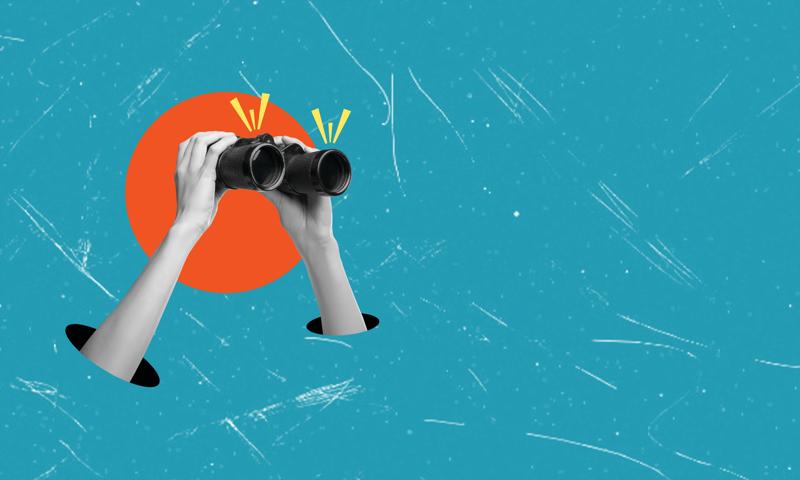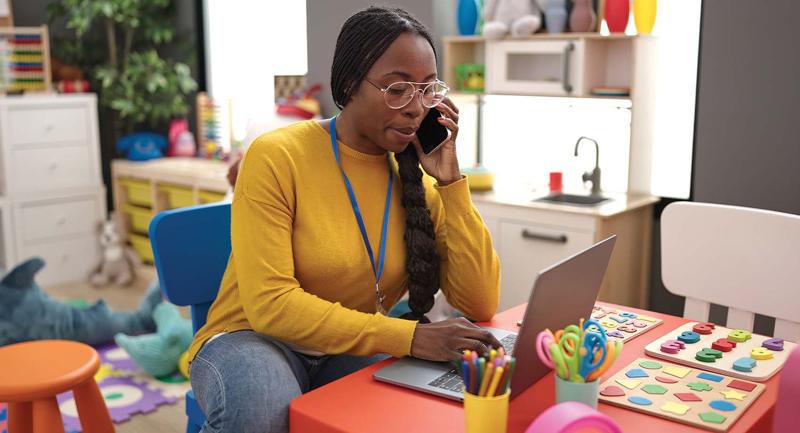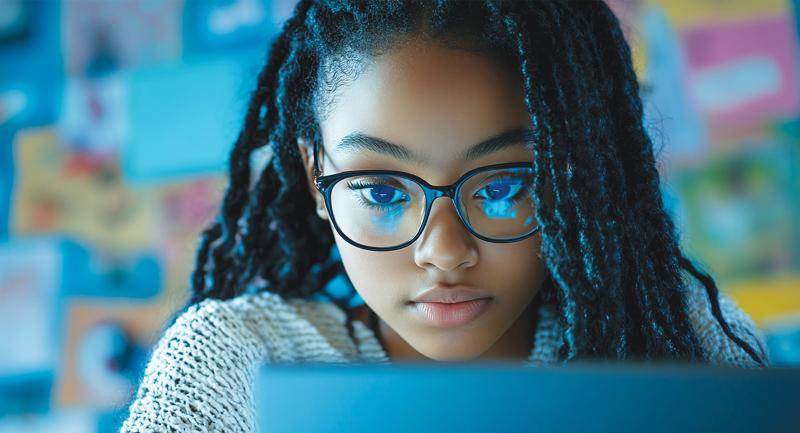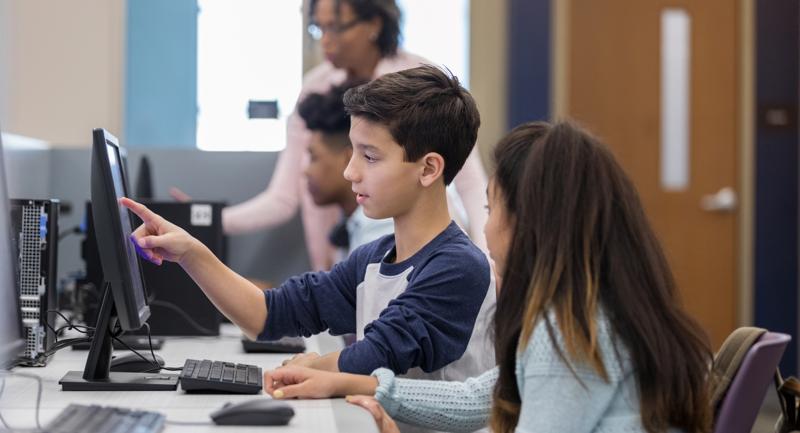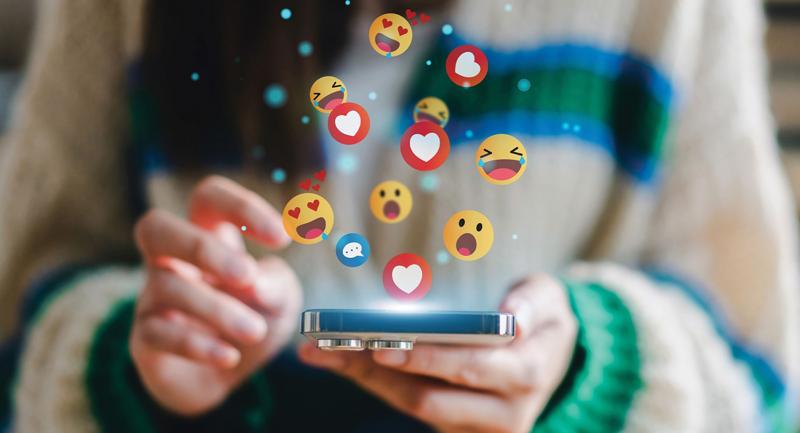For teachers who differentiate instruction, experimenting with technology is both an exciting and necessary experience. Those who work with students of any age understand that a period of experimentation must precede any meaningful implementation of a new educational tool. Before students can benefit from using base 10 blocks, a graphing calculator, a microscope, or a software application, for example, they need a chance to play with the tool, ask questions, and explore its possibilities. Educators who used new digital tools during the emergency remote-learning period know that experimentation and testing were key to effective integration.
But what now? Teachers have always wanted to learn ways to integrate technology effectively in their lessons, but in the post-pandemic era, this desire to move beyond experimental use is even greater. And for teachers who personalize learning for students, technology has potential to transform learning. Differentiated instruction can powerfully guide the integration of technology to promote more equitable, efficient, effective, and engaging learning.
Teachers whose educational decision making is guided by differentiated instruction already function as educational designers, using a "design mindset" (Kilbane & Milman, 2014). Designers are professionals who apply their specialized knowledge and skills to create experiences and solutions for others. Intentionally inquiring through needs assessments and similar methods, educational designers learn about their students' priorities, use these to identify clear goals, and then formulate strategic plans to achieve them. As progress is made, these designers systematically create, implement, and evaluate while also adjusting plans as needed. They approach their practice with an awareness of the control they possess as educational designers who not only teach, but also create, manage, and assess their students' learning.
This design orientation provides teachers who differentiate instruction with a mindset and a strategy for better understanding their students, which helps them determine when and how best to leverage available technology tools to respond to students' unique attributes.
The "4Es" of Edtech Integration
Differentiated instruction puts students' diverse needs front and center (Tomlinson, 2017). When differentiating instruction, teachers develop learning experiences that flexibly adjust specific instructional elements (such as content, process, product, the conditions where the learning takes place, and its atmosphere or "tone") to respond to the natural variability among students (their readiness, interests, or unique backgrounds).
But what's the best way to incorporate technology into this mix? It can be overwhelming to determine each tool's function and best application for a particular classroom. Many teachers are interested in using new technologies to support their students but are not sure where to begin. They wonder which tools are worth the potential risks, and how to gain the most benefit from them so the tools are used for more than basic, transactional purposes.
Guidance we have offered teachers for decades, based on our research and experience, is to remember that the integration of technology in any educational setting should always aim to accomplish the "4Es" (Kilbane & Milman, 2014). The 4Es can help determine whether a tool might make learning more:
Equitable: Does use of a certain technology promote more equitable opportunities without adding additional barriers?
Efficient: Does use save time, energy, or other resources?
Effective: Does the technology make learning more effective for all or some students?
Engaging: Does the technology stimulate students' attention and motivation?
It's also important to remember that the goals of instruction, particularly those of differentiated instruction, should drive the design of learning experiences and technology's integration within it. As teachers appraise the value of different tools and the methods for which they will be used, they must prioritize their goals for the design supporting differentiation, carefully consider what purpose will be served (how will it address students' needs equitably, efficiently, effectively, and/or in an engaging way), and determine what positive outcomes might result.
The goals of instruction, particularly those of differentiated instruction, should drive the design of learning experiences and technology's integration within it.
For example, will use of an online survey for pre-assessment save time (be more efficient), aid a teacher's analysis of information about student readiness (add efficiency and enable greater effectiveness), and inform more powerful learning design (resulting in more equitable, effective, and engaging learning experiences)? Will incorporating an online multimedia tool generate greater student investment in demonstrating their learning, diversify the modes available for expressing learning, and expand the classroom boundaries so that parents and other community members may contribute to supporting students' growth?
In addition, teachers will want to identify the constraints of the technology (what it cannot do and the conditions necessary for successful use) and the drawbacks (the possible compromises or negative effects) it will have in their design. Even when digital tools are used with the 4Es in mind, their incorporation can still result in unintended consequences for learning. For example, a malfunctioning tool might waste precious learning time. Or certain learners may experience barriers because they do not know how to use a tool properly. It is also possible that a technology has so many "bells and whistles" that students spend more time thinking about its gimmicky features than the content they should include to demonstrate their learning. This is why, when making decisions about technology, a teacher must not only consider the potential of the tool itself as it relates to their goals, but also clearly identify its potential problems and pitfalls, as well as be prepared to flexibly address any challenges that might arise.
Even if a teacher incorporates technology that supports differentiation and achieves the 4Es, it may only serve a transactional purpose. Transactional learning involves the exchange of ideas and information between teachers and students where the focus is knowledge transmission and acquisition, which has traditionally been the primary goal of learning. Many teachers routinely incorporate technology to support differentiation in this type of design. For example, they might make a simple lecture more effective for certain students through a multimodal demonstration (one that incorporates visual, auditory, and physical stimuli) using a software tool. Or they might record their lectures in video format and include captioning to support English language learners, hearing impaired students, or those who were absent, in addition to those who may benefit from rewatching or slowing down their teacher's presentation. Likewise, they might create more tailored, differentiated learning experiences for all students using pre-assessment data that is easier to collect and analyze through an online survey tool.
These uses of technology address the 4Es and meaningfully support students as they strive to achieve the goals for their learning; however, their impact can be finite because transactional approaches have limited outcomes. Even though transactional learning is a necessary, valuable, and efficient means for building the foundational understandings students require for new learning, teachers will also want to design transformational learning experiences. Such experiences foster students' capacities for creativity, collaboration, communication, critical thinking, cognitive flexibility, complex problem solving, and curiosity, often at the same time students are acquiring basic knowledge. These capacities are increasingly emphasized in national curriculum standards built around the recognition that to be prepared for life, citizenship, and work, students must have the ability to apply knowledge, not merely possess it.
Yet, the benefits of transformational learning experiences do not end with their power to support students' development of important capabilities. They also involve a transformation in students' beliefs, understandings, and actions. As students transition from being passive recipients of information to active creators of knowledge, they gain a new awareness of their agency and the dynamics of learning—understandings that better equip them for their future.
In experiences designed to promote transformational learning, students use digital tools to achieve instructional outcomes that are only possible with certain uses of technology. Toward this end, both the tool and how it is used are important. The same technology tool could be used in multiple ways, but one way might result in transformational learning and the other might not. For instance, two different groups of students might work on a project to promote composting efforts in their community, with the objective to use a photo- and video-sharing app to educate the community. One group might create a simple photo post with information about how and where to compost. The other group might transform their learning, however, by creating a video that includes polls to learn about community members' composting habits and embedded links to several relevant resources (such as composting locations in their community). The video group also engages with others, resulting in their posts going viral and making the local news.
Such outcomes are encouraged by the International Society for Technology in Education's Standards for Students (ISTE, 2016), which suggest learning be designed in a way that allows students to become empowered learners, digital citizens, knowledge constructors, innovative designers, computational thinkers, creative communicators, and global collaborators.
Transformational learning is dynamic and differs depending on contextual factors, such as grade level and content area. Still, according to ISTE, several essential conditions must be in place in a classroom or school before transformational learning can occur, including:
shared vision,
implementation planning,
equitable access,
prepared educators,
skilled and sufficient technical support,
high-quality learning activities and content, and
ongoing evaluation. (n.d.)
In a differentiated classroom, transformational learning experiences that are supported by technology would address one or more elements of differentiation (content, process, product, environment) and respond to the sources of variability among students (interest, readiness, and learning profile), just as any high-quality differentiated lesson would. However, while technology's inclusion might respond to students' needs to make learning more equitable, efficient, effective, or engaging, its involvement is not limited to this. Rather, the introduction of a digital tool into the learning experience can help students learn more, learn different things, and change how they think about themselves and the world around them.
The introduction of a digital tool into the learning experience can help students learn more, learn different things, and change how they think about themselves and the world around them.
A differentiated learning experience involving a transformational use of technology might involve students downloading real-time butterfly migration data collected from across the United States and analyzing the data using a spreadsheet to understand the effects of residential development and habitat loss. Students with different learning profiles would have the ability to consider these data using different types of visualizations (such as bar or line graphs or a pie chart) and be aided through the multiple and varied methods of representation made possible with the spreadsheet tool. Students would not only be able to retrieve the data more efficiently and with methods that effectively support diverse learning needs, but would also mirror the work of scientists in an engaging way and come to understand the data more fully. They might also use an augmented reality app to create a map with animated butterflies showing where and when they migrated. This experience would also open up students' sense of what it means to "do science" and empower them to see their role as stewards of the environment.
Designing for Differentiation
Teachers who differentiate instruction are educational designers, professionals who possess the skills and expertise to address the diverse learning needs of their students. Their approach to planning instruction, which incorporates varying content, process, and product, coupled with technology that addresses the 4Es, provides a strong foundation for creating transformational learning for students. Intentionally approaching their role as designers will allow educators to think strategically and systematically about the best ways to incorporate technology to achieve their goals.
The increased availability of digital tools in post-pandemic educational settings means that teachers no longer need to worry so much about whether technology will be available for supporting learning. They can focus their attention on considering how it can be most powerfully used, which depends primarily on how teachers choose to integrate it when developing lessons and learning activities. As teachers transition out of the reactive methods that enabled them to succeed during the pandemic, they will benefit from reconsidering the technology in the context of differentiation. This approach provides teachers an orientation to practice that enables them to proactively design experiences that respond to students' unique and diverse needs and promotes transformational learning. Adding technology to the differentiated instruction equation helps students cultivate relevant, real-world skills that will benefit them throughout their education, life, and careers.
Reflect & Discuss
➛ Do you see yourself as a designer when crafting lessons? If not, how might shifting your perspective change the way you create learning opportunities for students?
➛ How might the 4Es help teachers evaluate technology tools in more helpful ways?
➛ Think of one technology tool you incorporated recently. Was it for transactional or transformative purposes? How might you use it differently?




